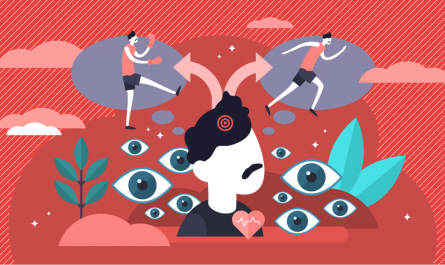Mental health is “a state of well-being in which the individual realizes his or her own abilities, can cope with the normal stresses of life, can work productively and fruitfully, and is able to make a contribution to his or her community,” according to the World Health Organization (WHO).
Mental health includes emotional, psychological and social well-being. Good mental health does not mean a life without stress or difficulties. It simply means that you can cope with stress effectively, and make proper decisions in the face of challenges.
A healthy mind in a healthy body
Mental and physical health are closely interlinked. Mental health issues can lead to physical health problems— such as somatic symptom disorder, stroke and heart diseases, etc. Conversely, chronic diseases or physical impairments can also raise the risk of developing mental illness.
While there are numerous studies on the link between exercise and physical health, there is a paucity of research on the relationship between exercise and mental health.
Healthcare professionals recommend exercise to reduce stress, anxiety and negative emotions. Exercise also boosts self-esteem and cognitive functions, improves sleep and overall mood, increases mental alertness, reduces cholesterol, and improves cardiovascular fitness and so on.
Exercise can be of great help for people with schizophrenia as they are more vulnerable to obesity, owing to antipsychotic treatment. For instance, a study of schizophrenic patients who participated in a 3-month physical exercise program, showed improvements in weight control, fitness levels, exercise tolerance; reduced blood pressure levels, elevated energy, upper body and handgrip strength levels.
Experts believe that around 10-30 minutes of moderate exercises, such as brisk walking for 3 days a week, is sufficient to improve mental health.
Exercise and stress
When a person is under stress, they may experience different physiological symptoms — such as insomnia, palpitation, abdominal pain, tightness in the chest, muscle cramps, frequent urination and so on. Moreover, these symptoms may further elevate stress levels and set off vicious cycles of anxiety and depression. When you engage in physical activity, your body releases endorphins that help in breaking this vicious cycle. It improves your mood and overall wellbeing.
Exercise and depression
According to Help Guide, a study by the Harvard T.H. Chan School of Public Health shows that mild to moderate exercise like running for 15 minutes a day or walking for an hour reduces the risk of major depression by 26% and prevents any relapse.
Mild to moderate exercise can be as effective as antidepressant medication and that too, without any side effects. It takes your mind away from negative thoughts and leaves you relaxed. It also reduces inflammation.
Exercise and anxiety
Anxiety is among the most common mental illness and affects about 40 million American adults, according to an American Psychiatric Association (APA) survey. Anxiety disorders include elevated fear or panic attacks during crisis or a period of stress, post-traumatic stress disorder, hypervigilance, excessive worry most of the time, etc.
There are numerous ways to manage anxiety. Mindfulness exercise is a natural and effective way to treat anxiety. It relieves stress, boosts physical and mental energy, and releases endorphins. Mindfulness exercise means being aware of the present moment and involves focusing on the sensation in the body, the rhythm of breathing, allowing thoughts that come to your mind without being judgmental. It will be helpful if you pay attention to every aspect of the exercise instead of allowing your mind to wander.
Exercise and ADHD
Regular exercise is the most effective way to reduce the symptoms of attention deficit hyperactivity disorder (ADHD). It helps to improve concentration, motivation, memory, and mood. Physical activity or exercise may help to boost the brain’s dopamine, norepinephrine, and serotonin levels, all of which affects focus and attention.
Exercise and PTSD and trauma
Evidence suggests that practising mindfulness exercises can help nervos system. Both indoor and outdoor exercises are helpful to people with PTSD.
Health benefits of exercise
1. Better sleep: Helps regulate sleep patterns. You can feel the difference in your sleep quality by including a 30-minute exercise in your routine. Also, if you exercise late in the night, it is advisable to do it at least 1-2 hours before bedtime as the endorphin levels raised due to physical activity need some time to wear off.
2. Energy booster: Increases your heart rate and make you feel more energized.
3. Sharper memory and thinking: Stimulates the growth of new brain cells, making you feel better, concentrate and focus more, and prevent age-related cognitive decline.
4. Increased self-esteem: When exercise becomes a part of the routine, you will feel good and strong. You will feel comfortable about your physical appearance, and develop a sense of achievement upon meeting exercise goals.
5. Builds resilience: Strengthens the immune system and helps in coping with stress.
To sum up, the key to a healthy body and mind is exercise, which not only helps in the prevention and treatment of different physical ailments but also keeps you mentally fit. While exercise has numerous benefits, it can also lead to undesirable outcomes, especially if performed in an inappropriate way. So doing it the right way is essential. Physical activity (mild to moderate exercise) can effectively improve psychological and immunological functions. So, how often do you make time for exercise? And most importantly, are you doing it the right way?




